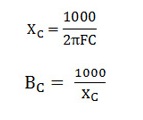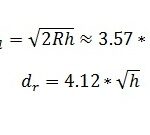What is a QCI in LTE?
Today, let’s talk about QCI, which stands for Quality of Service Class Identifier in LTE. If you’ve come across LTE networks, you must have heard the term Quality of Service (QoS). QCI plays a critical role in managing the quality of service for different types of data traffic in LTE. So, let me walk you through the concept of QCI and how it affects your experience on a network.
Understanding QCI in LTE
In LTE, QCI is a numerical value assigned to each bearer of traffic to indicate the level of service expected for that traffic. Think of QCI as a way to classify different types of traffic (like voice, video, or data) and assign them a priority, so that the network knows how to handle each traffic type efficiently. This classification helps maintain the desired user experience even under varying network conditions.
The QCI defines the packet delay, packet loss rate, and the priority of traffic for each bearer. As we discussed earlier, Quality of Service (QoS) is important for managing network resources, and QCI directly influences how the network prioritizes and handles data traffic. Different services such as VoLTE, web browsing, and video streaming require different levels of priority and network resources to maintain an optimal experience.
QCI Values and Their Significance
QCI values range from 1 to 9, with each number corresponding to a different set of parameters that define the QoS. Here’s a quick breakdown of the typical QCI values you’ll encounter in LTE:
| QCI Value | Service Type | Packet Delay (ms) | Packet Loss Rate |
|---|---|---|---|
| 1 | Voice (VoLTE) | ≤ 100 | ≤ 10^-2 |
| 2 | Video (Streaming) | ≤ 150 | ≤ 10^-3 |
| 3 | Video (Interactive) | ≤ 150 | ≤ 10^-3 |
| 4 | Voice (Non-VoLTE) | ≤ 150 | ≤ 10^-3 |
| 5 | IMS Signaling | ≤ 100 | ≤ 10^-3 |
| 6 | Background (Email) | ≤ 1000 | ≤ 10^-5 |
| 7 | Internet (Web Browsing) | ≤ 1000 | ≤ 10^-5 |
| 8 | File Transfer | ≤ 1000 | ≤ 10^-5 |
| 9 | Best Effort (Low priority) | ≤ 1000 | ≤ 10^-5 |
How QCI Impacts Your Network Experience
As you can see, different QCI values are assigned to various services based on the type of traffic and the quality requirements. For instance, voice calls (VoLTE) need to be given high priority because they are sensitive to delays and packet loss. On the other hand, activities like web browsing or file transfers can tolerate higher delays or occasional packet loss. The LTE network uses QCI to manage these differences, ensuring that high-priority services (like voice) receive the necessary resources first, while less time-sensitive services (like background data) can wait.
In a real-world scenario, if you’re making a VoLTE call and browsing the web at the same time, the network will prioritize your voice call (with a lower QCI value like 1) to ensure call quality, while web browsing will be assigned a higher QCI value (like 7) with slightly relaxed requirements for delay and packet loss.
This prioritization ensures that the user experience remains smooth for critical services even during periods of heavy network traffic. The network continuously monitors and adjusts based on current conditions, making real-time decisions on how to allocate resources across various services.
QCI and LTE QoS
Earlier, we discussed how QoS management is an essential part of LTE’s network structure. QCI is directly tied to QoS because it defines the performance characteristics of different types of data traffic. By using QCI, the network can distinguish between high-priority traffic like voice or video and lower-priority traffic like background data, adjusting the resources accordingly to maintain service quality.


